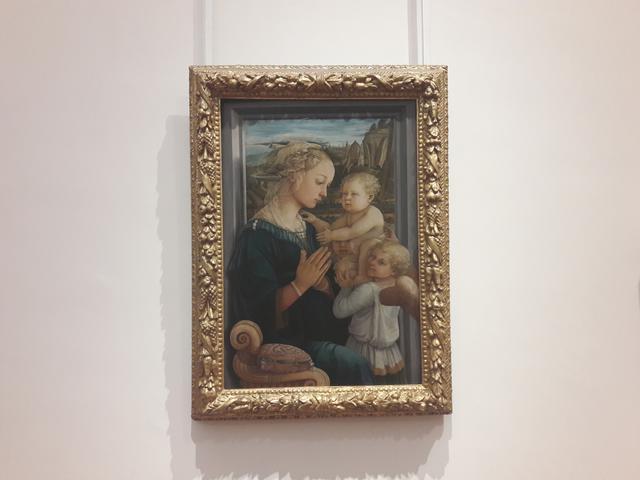Madonna and child with two angels

This is Filippo Lippi's most famous piece and features extraordinary spontaneity in its interpretation. The Virgin is seated on a throne, of which it is possible to glimpse only the soft, embroidered cushion and the carved arm. She is staring at her son, turning toward him with her hands folded in prayer. His expression is gentle and forgiving, almost melancholy, as if he can foresee the painful fate that awaits his son. The young Jesus, covered only in swaddling clothes, looks at Mary, holding both her arms, supported by two angels. The angel in the foreground is smiling and looking outward, as if to bring the viewer into the scene. The close-up style, with the group painted as little more than half-figures, placed in a small space and surrounded by a Serena stone frame, makes this composition similar to numerous relief sculptures made by Florentine sculptors of the same period. The window opens onto a vast and varied landscape, overlooking the sea, with rocks, vegetation and buildings. The sacred image has been translated with a deep sense of humanity, both through the expression of affection and in the choice of clothing and hairstyles, which have been inspired by fashions of the same period. The Virgin is dressed in the most elegant way, with a crown of pearls and veils intertwined in her hair, in the same way as the Florentine noblewomen of the late 15th century. The halos are barely hinted at: thin coronas and rays of light that do not cover the landscape behind. So far there is nothing to confirm the idea that the Virgin's face is none other than that of Lucrezia Buti, the young nun from Prato, who became Lippi's wife. The composition was a success from the beginning and was used as a model by many artists, including the young Botticelli, a student of the artist. We do not know, however, the original destination of this sacred image; The first information dates back to the end of the 18th century, when it was in the Villa Medici of Poggio Imperiale in Florence.
© Tourblink